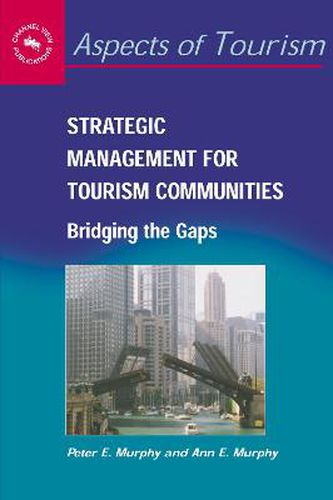Readings Newsletter
Become a Readings Member to make your shopping experience even easier.
Sign in or sign up for free!
You’re not far away from qualifying for FREE standard shipping within Australia
You’ve qualified for FREE standard shipping within Australia
The cart is loading…






Tourism, with its wide-ranging impact, needs to be managed effectively - but how? This book advocates taking a business approach to tourism that encourages greater collaboration between stakeholders in the practical assessment of tourism options. The approach places key business management functions and stakeholders at the forefront of tourism initiatives. The business management functions of planning, organising, leadership and control are the filters through which tourism opportunities are viewed, while the stakeholder groups of customers, residents, industry and government set the agenda for appropriate tourism development. Tourist destinations must engage in realistic assessments of their abilities to meet the needs and expectations of tourism stakeholders and then act on these assessments so their goals and objectives can be achieved. A new model for bridging stakeholder gaps is presented as a template for how communities can understand and make the most of their tourism resources. The Bridging Tourism Gaps Model is a practical tool to help destinations focus on the important factors in developing and maintaining tourism as a beneficial and vital part of their communities. This book builds on the success of Tourism: A Community Approach and the subsequent tourism planning experiences of both authors to advance strategic planning in tourism.
$9.00 standard shipping within Australia
FREE standard shipping within Australia for orders over $100.00
Express & International shipping calculated at checkout
Tourism, with its wide-ranging impact, needs to be managed effectively - but how? This book advocates taking a business approach to tourism that encourages greater collaboration between stakeholders in the practical assessment of tourism options. The approach places key business management functions and stakeholders at the forefront of tourism initiatives. The business management functions of planning, organising, leadership and control are the filters through which tourism opportunities are viewed, while the stakeholder groups of customers, residents, industry and government set the agenda for appropriate tourism development. Tourist destinations must engage in realistic assessments of their abilities to meet the needs and expectations of tourism stakeholders and then act on these assessments so their goals and objectives can be achieved. A new model for bridging stakeholder gaps is presented as a template for how communities can understand and make the most of their tourism resources. The Bridging Tourism Gaps Model is a practical tool to help destinations focus on the important factors in developing and maintaining tourism as a beneficial and vital part of their communities. This book builds on the success of Tourism: A Community Approach and the subsequent tourism planning experiences of both authors to advance strategic planning in tourism.